Oh, Baby











































Years ago, I would have found many of the articles published in this issue hokey. But 20 years and three children later, I wish this sort of hokey had been available to me at the time when I was having kids.
I dealt with it all: planned pregnancy, difficulties getting pregnant, unexpected pregnancy, miscarriages, inability to breastfeed, colic, postpartum depression, incontinence issues, excessive weight gain, a fupa, medical issues and more. In the end, now that they are 19, 16 and 14, I acknowledge I have survived and flourished and so have they. But, and this is a big but, if I’d had the resources offered by the Roots Perinatal Resource Guide: Resources for Pregnancy to Parenthood, I can’t help but think I would have weathered all of above with much more support and grace.
advice was actually very helpful. But I could have used a little more of the new support. Like creating a village, support groups, alternative therapy for things like colic. Truth be told here; nothing ever helped my first two girls through their colic except running a vacuum and I burnt a hole in my carpet doing so. I would have tried anything to maintain my sanity and my poor child’s gut if I’d known what alternatives were out there.
Bozeman Health Pediatrics on the Deaconess Regional Medical Center campus.
Dr. Wi�ekind is board cer�fied in pediatric cardiology and general pediatrics. Dr. Wi�ekind sees pediatric pa�ents for the care and treatment of congenital heart disease, fetal cardiology, cardiomyopathy, heart rhythm disorders, and preventa�ve cardiology.

Not going to lie here, my journey was often very hard and I often felt utterly alone, which is why we publish the Perinatal Resource Guide, to let all parents and caregivers out there know they are NOT ALONE. And to provide resources: Eastern, Western, traditional and what some might consider hokey. When I did my original line edits on these pages, I found myself saying, “I wish I had known about that back when…” like Thai Medicine, doulas, PTs and chiropractors to name a few. And the village, no one talked about a village when we were actually more divided than past generations. Rather, my babies and I stumbled through this new world with a primary care provider, a few good friends, a ridiculous amount of internet information (and no way to know what was true or not) and—as every generation will have—our mother and mother-in-law’s advice.
Point being, this guide is a very valuable resource. I remember years ago when Suzanne Bendick of Roots Family Collaborative initially pitched the concept to us and asked for Montana Parent to work with her on editing, layout and printing. Never did I imagine it would become the amazing asset it is to our community today. If there were a Suzanne and a Roots in every community, county, city and state, parents and caregivers would be so much better off.
We have all read of the horrors that can come out of untreated and unrecognized postpartum depression. This guide was born out of an attempt to prevent those tragedies from ever happening again. It has grown and blossomed into an all-encompassing pre- and postpartum contact book for pregnancy, childbirth and parenting.
I told Suzanne recently how thankful I am for our partnership. It is so fulfilling to have kindness, compassion and community woven into my daily life. And I meant every letter of every word.
in collabora�on with
Learn more at BozemanHealth.org or call Bozeman Health Pediatrics at 406-414-4570
This is not to knock the way things have always been done – some of that older generation’s
Thank you, Suzanne, for the countless hours you put into making this happen every year, and thank you to all of the providers listed for sharing your knowledge and gifts with us.


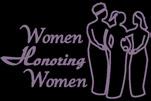

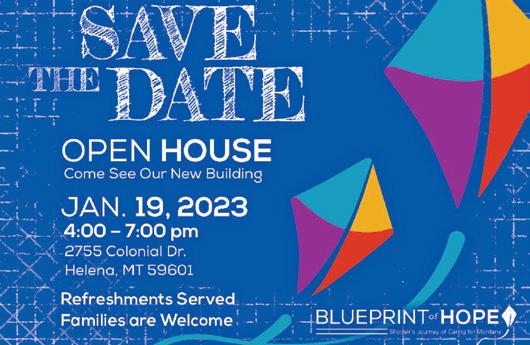







 PHOTO ADP STUDIO
PHOTO ADP STUDIO
 WRITTEN BY CHERYL TENPAS | PHOTO ADP STUDIO
WRITTEN BY CHERYL TENPAS | PHOTO ADP STUDIO
I learned that infertility is a path that many are—and will continue to be—on. When I started on this journey, I felt more alone than I’ve ever been. It took confronting the real origin of my feelings of shame, unworthiness and jealousy to accept this journey as mine, and that suitcase took years to unpack. We must give ourselves and each other unconditional grace in this life. Everyone is dealing with something hard; letting go of control and addressing what gets exposed is the only way to develop your most sacred relationship – the one you have with yourself.
Our infertility story began back in September 2017. I was working as a pelvic floor physical therapist for a specialized clinic in Denver for about six months and was surrounded by patients who were pregnant on a daily basis. I went to see an OB-GYN and after a basic check-up she told me that my ultrasound showed “signs of polycystic ovarian syndrome (PCOS),” despite predictable menstrual cycles and a complete lack of any symptoms.
I felt intimidated by this diagnosis but also anxious to do everything I could to prove her wrong. I started taking prenatal vitamins, mapping basal body temperature, using ovulation predictor kits and tracking cycle details including cervical mucus, mood, intercourse and every possible little ache I felt anywhere on my body. I felt genuinely positive about our chances of conceiving; I had no doubts that my efforts would prove successful. Full disclosure: I’m a Type-A; everything I’d ever achieved in life came from focused dedication. So why should conceiving be any different? Turns out everyone’s advice to just “relax and it’ll happen” didn’t hold much weight.
Fast forward one year and zero pregnancies later: My husband and I had moved to Steamboat Springs and met with another OB-GYN who informed us that although our many fertility tests were “normal,” we were experiencing “unexplained infertility,” and we should probably consider in vitro fertilization due to higher success rates. We had an idea of the astronomical costs associated with IVF and were NOT interested. I still felt confident that my body was capable of natural pregnancy. It felt to me that nothing could stand in the way of this happening “organically.” I came to realize later that this obsession with proving to myself and others that I was worthy of natural pregnancy was a red flag.
We spent the next two years doing every preIVF fertility procedure that exists – three IUIs, eight months of Clomid, acupuncture, therapy, massage, support groups, you name it. All were unsuccessful. I began to stress heavily about my biological clock. It felt like it was ticking faster with every month that passed. For 24 months in a row, I experienced the grief of another loss each time my period showed up. Meanwhile, I was still treating pregnant patients daily and balking at all the baby announcements on social media. It was impossible to not compare their successes to my own inabilities. I knew this was a “me” problem when I started feeling jealous of the cows and their calves on my drive to work. My husband and I started arguing about whether all of the stress was really worth it.


Then, my husband’s growing business brought us to Bozeman in August 2021 and I made the earliest appointment I could with the Reproductive Endocrinology group at Billings Clinic. After a basic exam, a discussion about the success rates, costs, commitment associated with IVF and learning of our incredibly poor chances of natural conception (1%), we made the heavy decision to pursue IVF.
It is now almost a year later, and I am in my second trimester of pregnancy with a baby girl. Considering the unexpected physical and emotional symptoms that come from the selfmedicating, endless procedures and time warp that is IVF, it’s truly mind boggling to me that anyone can come out of IVF without some level of trauma. Regarding relationships, my husband and I made it through, but it was the most challenging experience of my life as a partner. I’ll be forever grateful for the many issues we were forced to address in our marriage that infertility exposed.
I learned that infertility is a path that many are—and will continue to be—on. When I started on this journey, I felt more alone than I’ve ever been. It took confronting the real origin of my feelings of shame, unworthiness and jealousy to accept this journey as mine, and that suitcase took years to unpack. We must give ourselves and each other unconditional grace in this life. Everyone is dealing with something hard; letting go of control and addressing what gets exposed is the only way to develop your most sacred relationship – the one you have with yourself.
Cheryl Tenpas is a pelvic health physical therapist at Lone Peak PT in Bozeman, Ferguson Farms.



Every year when I sit down to write the introduction to the Roots Perinatal Resource Guide: Resources for Pregnancy to Parenthood (so intentionally created from start to finish and tucked carefully into the pages of this magazine), I feel a deep sense of gratitude and pride. To the many professionals, organizations and community members dedicated to supporting parents in this unique developmental stage, and for everyone who has used this guide on their journey or shared it with a loved one, thank you. For those of you here for the first time, welcome. I am so glad you are here.
This has been a community effort since the beginning, and I don’t just mean this publication (although both are true). We are and always will be social creatures who need one another. There is nothing that can erase the fundamental biological need, especially during such a vulnerable transformation, which lives in all of us. Becoming a parent is a major transition—for 100% of people.
We all need support. Period.
Each one of us comes to the table with our own unique story woven together from many life experiences, including those of trauma, loss, adversity and even how we were parented (or not). This patchwork of our life essentially gives each of us our own unique blueprint for what is needed to support this incredible transformation from individual to parent. In
my opinion, everyone’s perinatal journey is as unique as each individual. However, the one piece of the puzzle which is NOT unique and is 100% nonnegotiable is the need for support. We all need it. It’s not just helpful – it’s essential to our survival.
The Roots Guide has evolved so beautifully over the years – both providers and parents look forward to its release each year. It highlights those in our community who have specific training with perinatal mood and anxiety disorders, as well as those who have experience working with parents in this stage, reflecting a multifaceted approach to each parent’s individual wellness. The Guide not only represents a commitment to addressing the shifting perinatal mental health landscape on a community level, but it breaks down the stigma and normalizes reaching out for help for all families in this unique developmental stage.
Most importantly, this guide is a connection point — a conversation starter or even a soft place to land, offering a new mom or dad words of compassion as they embark on this incredible journey.
At Roots, we always say there is not a onesize-fits-all approach to this journey and it feels helpful to repeat, for those in the back, everyone needs support. You are worth being cared for during this time in life, no matter what brought you on this journey.
I’m not suggesting that, because this guide exists, it will be easy for you or you will find everything you need in its pages – rather, I hope you know you are not alone in this. There is support for you and your family right here in our community. If you are not seeing what you are looking for or have no idea where to begin, please reach out to Roots. We can help connect you to the support you need. Check out the centerfold for all the incredible Roots offerings!
As always, be gentle on yourself, knowing you are not alone and are worthy of the love and support that human parents need for survival.
This guide was made Possible in part by:
This guide was made Possible in part by:
As the Program Assistant at Roots, I recently attended a support group facilitator training and have been excited to lead our weekly Feeding Support Circle ever since. When my son was born, he struggled with gaining weight. I thought we were doing OK, and then suddenly we were overwhelmed by clinical advice and trips to providers followed by breastfeeding, pumping and bottle feeding – all in succession in the middle of the night. I felt isolated, alone and like I was failing. My son is older now, but I often reflect on my early days of being a mom with some regret. My son was cared for, all eyes were on him, but I needed someone to ask how I was doing. No one ever genuinely did.
At Roots we offer support groups to provide new moms and dads with the social support that all parents need. Our Feeding Support Circle, one of our many groups, is a place for moms to break the isolation, be listened to and find connection. It’s the group that I really needed when my son was little.
Now I know everyone needs support. As humans we are social beings; we crave relationships and belonging. Social support is not only important, it is essential through all stages of life. As women and new moms, we are taught we can do it all, that breastfeeding
should be easy or that we should be overjoyed to be a mom. However, we often (if not always) have challenges and struggles and are not able to voice how we really feel. Research shows that not having community, connection and social support makes us feel even more isolated, alone and – in the case of early parenting – increases the potential of postpartum depression, anxiety or rage.
At Roots we offer weekly and monthly groups to families in various stages of parenting. There is a group for families experiencing loss, a group for dads, three groups for new moms (virtually and in person) and a special group centered around the joys and challenges of feeding a baby. We also offer Re:born, our Sunday evening gathering at Farmer’s Daughters Café for moms in all stages of parenting. Check out the centerfold in the Roots Perinatal Resource Guide for all the details on our groups.
Our support group facilitators are trained using the Group Peer Support (GPS) model, which recognizes the importance of social peer-to-peer support and has a beautiful framework for creating a space that is as safe as possible for participants. At every session, we create a welcoming environment and begin each group with guidelines requesting
confidentiality, listening with nonjudgement, no advice, welcoming all emotions. All parents are welcome, and for many just showing up is enough.
I also help plan our annual event, Moms Like Me, and have watched the storytellers work through their stories and speak their truth on stage. After witnessing these courageous mothers tell their stories, I believed in the power of storytelling but could never explain it. Doing the GPS training and facilitating our support groups have given me more clarity on the subject. Throughout history, we women have not had power in our voice and I would argue this is still true today during pregnancy, childbirth, parenting and even into menopause. Speaking your truth is a revolutionary act. It normalizes the experience of motherhood and it leads to resilience, power and transformation. We all have our own experiences but collectively we find strength, courage and power.
All families need support and connection. Becoming a parent is not easy. I would encourage you, wherever you are, to connect with Roots and join us at one of our support groups.
 WRITTEN BY SAMANTHA TALSMA AND ROSE HEIDER | PHOTO ADP STUDIO
WRITTEN BY SAMANTHA TALSMA AND ROSE HEIDER | PHOTO ADP STUDIO
Experiencing firsts is one of the many joys of being a parent, from our little one’s first smile to their first steps, and then their very first word. Milestones are amazing and as parents we cherish these moments as our child grows. But one thing many parenting classes or books don’t talk about is when to start looking for child care.
It is a well-known fact that Montana is facing a severe shortage of safe, quality child care. A recent study by the Montana Department of Labor and Industry shows that licensed child care meets less than half of the need in Montana. When it comes to looking for child care, waitlists are often long and families may not get their first choice. In many cases, families looking for infant care can expect to be on a waitlist for a year or more.
Knowing this, you may be wondering when and how to start looking for child care. In general, it’s best to start planning for child care when you start thinking about having a child, or find out you’re expecting. Here are a few questions to help you get started:
» Do all parents/caregivers in the household plan to work, or will someone watch the baby part- or full-time?
» How long do you plan to take family leave?
» Can you tell the difference between legally operating and illegally operating child care?
» What quality care indicators are important to your family?
» What type of child care setting do you prefer?
» Where would you like your child care to be located?
Once you understand your family’s unique child care needs and preferences, you’re ready to begin your search. Places to start looking include:
» Contacting your local Child Care Resource and Referral Agency, like Child Care Connections.
» Joining a safe online group where you can connect with providers, nannies and legally operating early childhood educators, like Child Care Connections’ Child Care Share Facebook groups.
As you start your search, it’s important to note the costs of securing care. There are two main costs that often catch parents off guard: waitlist fees and deposits to hold a spot. Waitlist fees tend to range from $50-$200 and can quickly add up when joining several lists. Once you’re off a waitlist, you’ll most likely be asked to make a deposit to hold the spot for your child until they are ready to attend care. Deposits can be minimal or cost as much as an entire month of care. To help you know what to expect, it’s a good idea to ask about the child care’s deposit requirements when you get on their waitlist.
The takeaway is the earlier you can start looking for child care, the better. However, if you’re reading this over an eight-month pregnant belly, know that it’s not too late. Simply start by following the recommended steps above and know that you’re not alone in your search. Child Care Connections can help you. And, if you find the cost of child care, waitlist fees or deposits are a barrier to pursuing safe, quality care for your child, you may be eligible for help with these costs.
Visit Child Care Connections at www.cccmontana.org for a child care referral list, resources on picking the right child care program for your family, or more information on scholarships.
 WRITTEN BY ALI SCHWEITZER | PHOTO ADP STUDIO
WRITTEN BY ALI SCHWEITZER | PHOTO ADP STUDIO
I always imagined breastfeeding would be an enjoyable experience creating a bond between my babies and me, one that would just come naturally and leave a smile on my face. This turned out not to be the case for me, and I know it is not the case for many women out there. The truth is that many of us aren’t warned about how hard breastfeeding can be before we have our babies.
As a pediatric chiropractor, I often see moms in my office who are struggling with breastfeeding. When I first started my practice, tongue and lip ties seemed to be a huge part of feeding struggles, and the cranial work I did on these babies really seemed to help along with lactation consulting and tongue/lip releases. As I treated these moms and babies, I just assumed that most breastfeeding struggles were related to tongue and lip ties – boy, was I wrong.
Two years into practice, I found out I was pregnant and felt fully prepared for the breastfeeding journey ahead. Well let me tell you, it was not easy. My son did not have a tongue or lip tie, and – since he was adjusted 20 mintues after he was born and frequently after that – I couldn’t understand why breastfeeding was so hard. My cracked and bleeding nipples were just the start; I also suffered from clogged ducts, what I thought was a low milk supply, and I doubted myself repeatedly for not being able to do something that was supposedly so natural.
What I wouldn’t do to go back and tell my first-time mama self that it was OK, that everything I was doing was perfect and that breastfeeding is hard. I felt alone, and while I had amazing support and even saw a few lactation consultants along the way, I never got to a point with my first baby where I thought breastfeeding was easy and that I had a good grip on it. Eventually my nipples stopped cracking and bleeding, I was able to manage the clogged ducts and I found some good foods and oils that helped with my milk supply. Around 11 months, however, I was done and so was my son. He weaned himself and I just didn’t want to deal with the constant battle about whether I was enough, so our breastfeeding journey ended.
While I was glad it was over and proud that I had lasted as long as I had, I still felt a bit defeated, and had a hard time believing that I was the only one who struggled with breastfeeding. I was right, and as soon as my journey ended, my practice seemed to explode with moms experiencing similar struggles. Of course I dove in headfirst and took all the courses I could on tongue/lip ties, cranial work and just the biomechanics of breastfeeding in general. What I learned over the course of the next four years was astonishing.
Here are a few of my favorite tidbits that I now share with every mama (new, veteraned, breastfeeder, bottle-feeder, tongue tied baby or not) that I wish I had known when I was a new mom.
1. Your nipples have to form callouses to help protect them from all the suckling. What?! Yep, so those first few weeks of breastfeeding when your nipples are sore and may crack or bleed...normal. Your nipples are not used to all that sucking and pulling every few hours, so like any body part they have to toughen up, and they do so by forming callouses. These callouses go away after you have weaned, so each time you start the journey over again...you guessed it, more callouses need to form. And for those mamas with inverted nipples, it can take a bit longer to form those callouses and really draw the nipple out.
2. Clogged ducts happen a lot due to thicker, more viscous milk. So if you produce thick milk and are prone to clogged ducts, try using sunflower lecithin to thin out your milk, without decreasing any fat content and help keep those clogged ducts at bay. (Please talk to your health care provider about how to properly use sunflower lecithin).
3. The let-down reflex is not a tried-and-true sign of milk production. Some women never experience let-down, and for most women it completely goes away after three to six months. I was always afraid I wasn’t producing anything because my let-down stopped after three months and I was convinced that no let-down meant no milk.
4. Pumping does not always indicate how much milk you are producing or how much your baby is getting. The truth is most babies are way more efficient than any pump, and while they may nurse and get 6 ounces in 20 minutes, a pump may get 2 ounces in the same amount of time. DO NOT let that pump discourage you and make you feel like you are not producing enough.
These four tips were game changers for me as I learned all I could about breastfeeding and how to help other moms not feel so defeated by the process. So when that second baby came along, I was more prepared and ready to take on the whole breastfeeding process. It was still a struggle; again, my daughter did not have any tongue or lip ties, but she was very lazy and, again, I experienced a lot of pain at first. I kept reassuring myself about all I had learned, and as my baby gained more experience on my breast and her latch became stronger, I felt myself enjoying the journey a bit more this time around. I started having clogged ducts again and the sunflower lecithin changed my life. I pumped only when I really needed to and never looked at the amount that came out, and I stopped focusing on the feeling of let-down and just focused on being in the moment when I was feeding her. And you know what? I successfully breastfed her for two full years, in fact she would still be breastfeeding today if I’d let her. Since I didn’t have to wean my son, I was lost at how to wean her, but that’s another story for another day.
Now, with two breastfed babies under my belt, I still enjoy helping those moms and babies who struggle with nursing and I want every mama out there to know that you are not alone. There are so many of us who have not found it easy or enjoyable to breastfeed. And whether your baby is tongue-tied or not, seeking out the right team for support is crucial. Take advantage of the knowledge your midwife, lactation consultant, chiropractor or breastfeeding friend has and know that you are not alone. My office door is always open and I not only love to help those struggling with breastfeeding using chiropractic care, but also love helping you find the team that is going to help you create that success story for yourself.

 WRITTEN BY MORGAN SCHMELZER
WRITTEN BY MORGAN SCHMELZER
Returning to work is a huge transition for many mothers. The addition of pumping can be both emotionally and physically challenging. Will baby take a bottle? What will my boss think? Will I lose my supply? If any of this sounds familiar, you’re not alone. Everyone’s experience will be different, but as a Speech Language Pathologist and Certified Lactation Counselor, I can offer the following steps for easing your way back to work feeling more confident and less anxious.
First, know your rights. As of 2010, portions of the Affordable Care Act require employers to provide you reasonable breaks and a private space to pump. Legally, this cannot just be a bathroom. You may take these breaks multiple times throughout your shift until your baby is 1 year old (though many employers are accommodating beyond this).
Then, be up front with your boss. If you know you’ll be pumping, consider starting this conversation as part of your maternity leave meeting. That way, there’s already a plan and less suspense for your return. Let them know how often you’d like to take a break, how long you feel is appropriate and where you’d like to store your milk, as well as any sanitizing or washing needs. Don’t sell yourself short – 15 minutes is often not long enough to set up, express milk and tidy. Similarly, trying to please your boss by pumping less often will likely reduce your milk supply. Be upfront and honest.
Now let’s get to logistics. You’ll need an appropriate pump for expressing milk at work to be effective in supporting your goals. Most insurance providers cover electric pumps at little to no cost. While hands-free models are hitting the market hard, proceed with caution until you feel confident in your typical supply. Often, these types of pumps are less powerful and yield lower milk output. Additionally, get to know your flange size. Most women are using a flange much too large, which can cause pain, reduced milk flow and less efficient pumping. Pumps can be confusing and frustrating – a lactation provider will be able to support you in selecting a pump that fits your needs, budget and preferences.
You’ll also want to make a schedule. If your infant is nursing at home every two to three hours, consider pump breaks at similar intervals to make up for those missed feedings. Later on in your back-to-work journey, you may be able to space these out further, but we want to do everything we can to protect your supply in those first precious weeks or months. What might that look like? Let’s say Sarah works 9 a.m. to 4 p.m. She nurses her 4-month-old daughter, Hattie, at 8 a.m. before they leave the house for daycare drop-off. Sarah pumps for 25 minutes at 11 a.m. and again at 1 p.m. for 30 minutes, then she leaves work at 4 p.m. and nurses Hattie when they arrive home at 4:15 p.m. A standard recommendation would be to send about 1 to 1.5 ounces of milk per hour that you are gone. So, Sarah sends Hattie to daycare
with two 4-oz bottles. Clearly many babies do not run by this specific of a timetable, but as you practice and get in the rhythm of pumping, your child care days become more predictable.
It’s always important to remember appropriate storage guidelines. A quick review per the CDC:
» Freshly-pumped milk is safe at room temperature for up to four hours, in the refrigerator up to four days and frozen for up to six months (up to 12 months in a chest freezer).
» Thawed, previously frozen milk is safe at room temperature for up to two hours, in the refrigerator for one day and should never be refrozen.
Finally, introduce and practice with a bottle early. Give yourself time to find your baby’s preferences before your first day back. If you’re still having difficulty, schedule a consult with a feeding specialist.
Going back to work can be hard, but our community is here to help. Lactation consultations are great tools to establish a plan of action, and we’re here to support you all along the way. Best of luck and congratulations.
Morgan Schmelzer, MS, CCC-SLP, CLC, CPST, is a Speech Language Pathologist,Certified Lactation Counselor and Certified Child Passenger Safety Technician with MOSAIC Rehabilitation
As you watch your baby bump grow, birth control is probably the last thing on your mind. But unless you love the idea of getting pregnant again within months of delivery, you might want to talk to your doctor about it. My parents didn’t and—surprise!—my sister and I were born 13 months apart.
Now while I think I’m the greatest surprise ever, I didn’t want the same thing for my own family. So before giving birth I talked to my OB about what form of birth control I’d like to use after delivery. Making a plan allowed me to focus on my new little bugaloo when she arrived, rather than being worried that I might get pregnant again.
There are many options for contraceptives immediately following birth. Just keep in mind that your body may respond differently to the birth control that was being used before pregnancy. Hormonal forms of birth control that contain estrogen (like some forms of the pill) are not recommended for the first six weeks postpartum because estrogen increases the risk of developing a blood clot (deep vein thrombosis) during the immediate postpartum time period. After six weeks it is considered safe to take birth control with estrogen if the person has no other risk factors—but there is a chance it may affect milk supply. If someone is already struggling with milk supply and wants to breastfeed, a progestinonly pill would be a better option.
Both the Nexplanon implant (inserted under the skin in the upper arm) and IUD (inserted into the uterus) are recommended for an easy form of birth control that is effective for multiple years. It is extremely rare for IUDs to result in serious injury, but it should be noted that about five in 100 IUDs come out unintentionally within the first year of use. Although rare, it is more common for the IUD to become displaced if it is inserted immediately after vaginal delivery.
Like most hormonal birth controls, both the implant and the IUD may affect moods and periods. These changes can range from experiencing heavier, longer periods (with a copper IUD) to experiencing no bleeding whatsoever (with a hormonal IUD or implant). Just make sure to communicate with a doctor if any of these changes begin to negatively impact daily life.
Non-hormonal birth control comes in many forms as well, though the copper IUD and condoms are the most common. These forms of birth
 WRITTEN BY KATY BRENNAN AND CAMI ARMIJO-GROVER
WRITTEN BY KATY BRENNAN AND CAMI ARMIJO-GROVER
control will not affect milk supply. Although exclusively breastfeeding (a.k.a. chest-feeding) for up to six months after the baby is born is a form of birth control, it may not be as effective as other methods (and is the method my mum was using when she got pregnant with me).
If you’re not looking to have any more kiddos after this one, sterilization may be an option for you or your partner. Both types of sterilization are 99% effective and, for males, vasectomies block the tubes that carry sperm, take about 20 minutes to do and require only local anesthetic.
Female sterilization is the closing off or removal of the fallopian tubes. It can be done immediately postpartum, or during the surgery if you have a cesarean section. Laparoscopic sterilization is also an option a few weeks postpartum. It is minimally invasive and leaves a smaller scar.
You should be absolutely certain of your decision to be sterilized before the procedure as attempts to reverse it may not be effective. Not all doctors or medical facilities offer the same options for sterilization, so be sure to discuss this with your care providers leading up to birth.
Options for birth control after pregnancy come in all different forms, and it is OK if it takes some time for your body to adjust or to find the contraception that works best for you. If transportation to your doctor and/or available time postpartum are likely barriers to your postnatal visits, consider talking to your doctor about a birth control option that you can take with you when you leave the hospital after delivery.
Katy Brennan is originally from Vermont and feels so lucky to have been able to experience life in Bozeman these past six years, studying community health and Spanish. She loves board games, snowboarding, live music and community service and connection.
Cami Armijo-Grover is the Education Director at Bridgercare, a family planning clinic in Bozeman, MT. There are a lot of things Cami loves, but her favorite is a 6-year-old named Lucy.
Pregnancy is a time full of changes going on in your body. With so much information out there, it’s hard to know what exercises are best, when you should modify them and what the recommendations are for exercising during pregnancy. Only 15-38% of pregnant women are reported to follow physical activity guidelines and up to 60% of women are inactive in pregnancy.
There are many benefits to exercise during pregnancy, and new research is coming out giving more access to those who have never exercised. Those who have no contraindications to exercise should be physically active during pregnancy, which includes currently active women, currently inactive women and those with gestational diabetes.
When shouldn’t you exercise?
When you have a contraindication, which means physical activity is not recommended for those who have the following:
» Ruptured membranes or premature labor
» Unexplained persistent vaginal bleeding
» Placenta previa after 28-weeks’ gestation
» Preeclampsia
» Incompetent cervix
» Intrauterine growth restriction
» High-order multiple pregnancy (e.g, triplets)
» Uncontrolled type 1 diabetes, uncontrolled hypertension or uncontrolled thyroid disease
» Other serious cardiovascular respiratory or systemic disorder
These conditions mean exercise is not recommended.
There are a few conditions where it is recommended to talk to your obstetric care provider to discuss the advantages and disadvantages of physical activity before participating in exercise:
» Recurrent pregnancy loss
» History of spontaneous preterm birth
» Gestational hypertension
» Symptomatic anemia
» Malnutrition
» Eating disorder
» Twin pregnancy after the 28th week
» Other significant medical conditions
Any other circumstance whether you were active or not before you got pregnant gives you the green light to exercise during pregnancy.
What are the benefits of exercising during pregnancy?
Not only does exercise benefit you, it benefits the baby as well. A few benefits include:
» Reduced maternal weight gain
» Reduced risk of gestational diabetes
» Reduced risk of gestational hypertension
» Reduced risk of a C-section
» Less likely to have larger babies at birth
» Reduces risk of postpartum depression
» Potentially reduces length of first and second stages of labor
What are the recommendations for exercising during pregnancy?
The goal is to accumulate 150 minutes per week of moderate physical activity. Women should be active three times a week, ideally every day. There should be an incorporation of aerobic and resistance type exercises.
When do I have to modify movements?
This is person dependent. It can depend on a number of factors including your pre-pregnancy fitness levels or how many children you’ve had. You may hear blanket statements such as, “Don’t do planks in the second trimester” or, “You can’t do sit-ups at all during pregnancy.”
These aren’t necessarily true. I’ve seen women perform sit-ups during the second trimester without any issues or continue to run in their
third trimester. With modifying movements or exercises, give yourself guideposts as you go through your pregnancy. These guideposts can be symptoms, and they include:
» Pelvic heaviness
» Urinary or fecal incontinence
» Pelvic pain
» Pelvic girdle or low back pain
» Diastasis
If you have these symptoms during an exercise, it does not necessarily mean you need to stop what you are doing. That’s where pelvic health physical therapy can help you figure out if you should continue the movement or if there is a way to modify it to continue to do the things you love safely.
There are times when you have to stop exercising if you have the following symptoms:
» Persistent excessive shortness of breath that does not resolve on rest
» Severe chest pain
» Regular and painful uterine contractions
» Vaginal bleeding
» Persistent loss of fluid from the vagina indicating rupture of the membranes
» Persistent dizziness or fairness that does not resolve on rest
Those are signs that you should consult with your healthcare provider and to stop physical activity.
A pelvic health therapist will be your best resource throughout your pregnancy to guide you throughout each trimester. As your posture changes, if you start to have any low back or pelvic girdle pain, if you notice pelvic heaviness or incontinence, all these things and more can be addressed with pelvic health physical therapy.
Kelley Koontz, PT, DPT APRS Physical Therapy. You can connect with Kelley at www.bozemanaprs.com or kkoontz@bozemanaprs. com.





It’s Saturday morning and you hear your 3-year-old screaming at your 5-year-old and your dog barking at the delivery truck. Meanwhile, your infant is growling and blowing raspberries while throwing their breakfast at the cat. While you’re tempted to write this off as another chaotic morning, your infant is actively communicating with you (or the cat). Here’s what you need to know about an early phase of verbal communication called babbling.
Babbling is a form of verbal communication that is your baby’s way of establishing attachment and connection with their caregivers and environment. Babbling is essential for speech and language development. In this stage of development, babies experiment with how to create their first spoken words.
Ç
Birth to 1 month: Primitive vocalization including crying and sighing.
Ç
Ç
1-3 months: Cooing, squealing, emerging giggles and vowel vocalization (e.g.: “ahh, uhh”).

3-4 months: Simple consonant and vowel sounds (e.g.: “gah-goo”).
Note that different types of babbling tend to overlap and present themselves at the same time.
Ç
4-6 months: Babbling and vocal play occurs.
Marginal babbling: E xtends beyond making simple sounds. It is social and purposeful. It can be accompanied by vocal play, squealing, yelling, blowing raspberries, growling and cooing. This is often to gain the caregiver’s attention.
Ç
6-9 months: Progression to early canonical babbling also known as reduplicated babbling.
Reduplicated babbling: Repeating syllables using the same consonant and vowel sounds (e.g.: “ba-ba, ma-ma, da-da”).
Ç
9-12 months: Progression to canonical babbling also known as variegated babbling.
Variegated babbling: Producing syllables using different consonant and vowel sounds (e.g.: “bah-duh-nuh” or “ma-ga-ga”). Adultlike intonation patterns begin to emerge.
Ç
12-18 months: Babbling progresses to jargon with real words appearing.
Jargon: Conversational babbling (e.g.: “ba-da-ma-nuh-ba mama”) with use of adult-like intonation patterns (e.g.: volume, pitch and rhythm). May include pausing, turn-taking and nonverbal forms of communication (e.g.: facial expressions and gestures). Real words begin to emerge here.
If you notice that your baby is not babbling, or started to babble but stopped, there may be a cause for concern. Talking with a speechlanguage pathologist will help you address any speech and language concerns.
As parents and caregivers, we want to encourage speech and language development at an early age. This is done by playing or reading to your child, babbling back and forth with them, talking out loud about your own day, limiting screen time, keeping up with your child’s well check visits and seeking help if you have questions or concerns.
Sam Doolittle and Alyssa Lundquist are speech therapists at Lone Peak Pediatrics. They both specialize in early speech and language development. Lone Peak Pediatrics also offers services for feeding, lactation, orofacial myofunctional therapy, neurodiverse autism intervention, augmentative and alternative communication (AAC) and school-age learning intervention.
Postpartum Doula Care is a niche area of care provided to new mothers and their families specifically during the fourth trimester, the period of time after birth lasting anywhere from six weeks to six months. The fourth trimester is now recognized by The American College of Obstetricians and Gynecologists as “a critical period for a woman and her infant setting the stage for long-term health and wellbeing.” With societal pressure for partners and sometimes mothers to return to work, many new families lack the support they need at home letting the burden fall solely onto the new mother/parent.
They say you meet a whole new person the day you give birth – not your baby, but you. This statement is so true and makes the postpartum period that much trickier, because you may no longer be able to rely on your tried-and-true coping mechanisms. With a new baby comes new worries, and you may find it hard to ask for help, because oftentimes YOU don’t even know what is going to help you. This is where a doula can step in.
Tree of Life Doula Care has an exceptional team of highly experienced and educated postpartum doulas ready to help our community. Their doulas can walk into a home, begin a conversation and, within the first visit, usually come up with a plan to help the new mother/ parent get started on the road to their new normal. This can include breastfeeding support from Certified Lactation Counselors, infant sleep support, connections to providers for feeding therapy, babywearing support, light housework and meal prep. Having a constant support person just a phone call or text message away, dedicated solely to your journey into new parenthood, has proven to change the way families navigate this important time. They not only survive, but thrive.
The goal of the Postpartum Doula Project is to provide free and affordable in-home doula care to any family in our community, regardless of their ability to pay. They hope to implement a pilot program starting January 2024, contracting services from Tree of Life Doula Care. This program will provide critical care to new families at a pivotal time after birth by providing mothers, babies and families with postpartum care they would not otherwise receive. The rural nature of our state makes medical care difficult to access. This, compounded by the fact that care is often fragmented and confusing, leaves parents isolated, exhausted and overwhelmed in an extremely critical and vulnerable developmental stage.
Trained postpartum doulas provide nonmedical yet necessary care where other health care professionals are limited. This continuum of care is an essential and beneficial complement to current services provided to local families.
If you are interested in helping to kick off the Postpartum Doula Project, consider donating to Roots Family Collaborative or sponsor a family through Tree of Life Doula Care. Roots recently received a $20,500 grant (EXCITING!) from the Montana Healthcare Foundation to support a year-long planning process providing free or sliding-scale postpartum doula services in Gallatin and surrounding counties for families in this critical stage following birth.
Mikaela DiBerardinis is a fifth generation Montanan, married to her high school sweetheart, with four daughters. She works as a Birth and Postpartum Doula with Tree of Life Doula Care. When she is not working with other families, you can find her crafting, creating and prioritizing time for a nap most days, she’ll be the first to tell you that sleep matters!
The fourth trimester is, in my opinion, the most difficult. Not only are you healing from giving birth, but you are also trying to breastfeed, sleep, navigate a changing relationship with your partner and come to terms with a massive identity shift. Postpartum care is extremely lacking here in the United States, where most new mothers only have one doctor visit at six weeks postpartum. We are one of the only first-world countries that doesn’t offer paid mandatory maternity leave and have one of the highest maternal death rates in the world, a majority of which happen during the first year after having a baby. We simply do not take care of postpartum women.
I believe we can do better by preparing for the fourth trimester and making it a priority. As a doctor of Traditional Chinese Medicine, I lean heavily on the beautiful teachings of Zuo Yue Zi. Translated to “Sitting the month,” this tradition is a 40-day period of confinement where healing and adjusting to becoming a mom are expected and allowed. It is a time of receiving special meals to rebuild energy and replenish nutrients. Traditional practices are used to keep the new mom rested, warm and protected. These practices were first written in texts more than 4,000 years ago and are still used in China and in other cultures around the world to this day.
Sitting out the month may not be possible for you, but we can take the meaningful core of the Zuo Yue Zi and build a beautiful plan that works for you. When we start planning for our fourth trimester, it should always start with good pregnancy care. The first Chinese medical text that discussed in-depth maternal care was written around 100 BC. The care of the pregnant woman was extremely important in ancient China, because it insured that women could continue to have more healthy babies. The mother’s health was the root of family health, and the results of inadequate postpartum care would affect a woman for the rest of her life. This still applies to our world today. Make sure you are taking care of yourself during your pregnancy to ensure an optimal fourth trimester.
I like to start postpartum prep in the third trimester, which is usually when women in our culture have their baby showers. We can start to incorporate some care into this tradition by not only asking for baby gifts, but gifts for the new mom. Gifts for a mom can include meal delivery service, massage and facials, laundry service, candles or oils and healing bath salts. The third trimester is a great time to stock your pantry and fill up your freezer. Fill it full of meals, broths, lactation cookies, energy bars and hearty stews high in iron and fat. Create a meal train or get your friends together to cook up meals before the baby comes.
It is important to create a cozy place before the baby arrives. Our physical environment can dramatically influence our postpartum experience. Make sure you have a comfortable chair (I love a nice big recliner chair) and opt out of nursing chairs. Try to make this space quiet, away from the TV or computer. Make your lighting dim and relaxing. Have some of your favorite treats, essential oils and breastfeeding essentials close by. Make sure your nest includes a side table to hold drinks, pumps and, of course, food.
Assemble a postpartum team. Put together a list of people you actually like. I want you to try to get into the habit of asking for help. It was Chinese tradition for the mother and grandmother to help the new mom adjust, and although that might not be as important in our culture, we still need help. Create a health care team including postpartum doulas, chiropractors, physical therapists and acupuncturists. Have someone you can trust watch the baby so you can indulge in self-care. It is a must.

Lastly, a good postpartum plan includes honoring yourself. Celebration and ritual are very important, because this transition to motherhood is a beautiful experience. Take the time to honor your body and appreciate all it has done for you. Create a self-love or gratitude journal. Consider having a blessingway ceremony to help you feel special and honored. Gather your female friends, mothers and grandmothers to ask for advice. Take the time in your third trimester to schedule self-care for after the baby comes. Book massages, facials and other self-care routines so that you do not have to worry about doing it later.
My final thoughts on this are simple: Postpartum care is essential and desperately needed. We have a responsibility and obligation to take care of our mothers to ensure the success of further generations. We can start by simply preparing our mothers and helping them through the fourth trimester.

Rhianna Weaver is a Doctor of Traditional Chinese Medicine, and owner of Big Sky Fertility and Wellness. She is a mama bear, herbalist and healer. She loves coffee and spends her free time in a good book.



There are a myriad of benefits to exercising throughout pregnancy and as a new or veteran parent, but pre- and postnatal corrective exercise offers a path forward that makes navigating all of it feel a lot easier.

The benefits of exercise during pregnancy are numerous, from helping to optimize weight gain to decreasing the risk of complications and reducing the need for pain relief during labor, all while helping to grow a fitter, healthier baby. But without the knowledge of the physiological changes specific to pregnancy, traditional fitness can increase the risk for injury and in some cases make recovery postpartum more challenging. Prenatal corrective exercise, however, offers a safe, customized, evidencebased approach to prenatal fitness that helps a birthing parent get stronger for pregnancy, birth and life as a parent.
During pregnancy, the body experiences a lot of physiological, emotional and mental changes that traditional fitness isn’t typically equipped to support. But pre- and postnatal corrective exercise with a certified specialist offers coaching in a supported, holistic way that takes pregnancy’s unique physiological changes into account. Unlike traditional fitness that focuses only on strength and cardio-respiratory fitness gains, pre-and postnatal corrective exercise looks at the layered nuances and needs of every pregnant or postpartum person along with the
many physiological changes happening in their body. It offers a whole-person, mind-body approach to fitness that incorporates breathing, movement, mindfulness, nutrition and lifestyle to help foster a stronger, healthier, more comfortable pregnancy, birth and postpartum recovery.
One physiological change that gets a lot of attention in the pre-/postnatal fitness and physical therapy world is diastasis recti. It’s experienced by nearly everyone during pregnancy and is a physical adaptation of the core that happens when the connective tissue along the midline of the belly, called the linea alba, gets soft and stretchy to allow for the growing baby. The “six-pack” abdominal muscles separate along this now-soft midline as the pregnant belly grows. The change is completely normal and needed. But prenatal corrective exercise can support this change by optimizing how the deep core muscles work together, and gently strengthening them to help support the belly and the baby as the connective tissue stretches.
In the postpartum period, parents are suddenly thrust into the world of no sleep and movements their bodies have never had to do before. Core and pelvic floor dysfunction experienced after giving birth are also common but postnatal corrective exercise in the early weeks, or even years, after birth can
help parents restore their core strength and connection, eliminate core and pelvic floor complaints and provide a fitness program designed for the postpartum body.
By improving muscular balance and neuromuscular connection, increasing physical self-awareness and improving confidence in the body’s ability to perform what is asked of it, pre- and postnatal corrective exercise takes your fitness journey to a whole new level.
By using even gentle corrective exercises, core and pelvic floor function can improve, and lower back pain can be eliminated. The repetitive movement patterns used in activities of daily life – like bending over to change a diaper, or put baby down to sleep – can become a natural part of rebalancing and restrengthening the body. By teaching you how to activate certain muscles correctly and lengthen or “quiet” others that are doing too much, you teach your body how to rebalance itself and move in ways that can help you move better for the rest of your life.
Maggie Yount is a Licensed Fit for Birth Pregnancy Safe Coach, a Certified Pre and Postnatal Corrective Exercise Specialist, and a NASM Certified Personal Trainer. She is currently seeing pregnant and postpartum private clients in Bozeman. For more information visit www.wholehealthymama.com or Instagram at @ wholemamafit.





 WRITTEN BY SARAH BIERUT
WRITTEN BY SARAH BIERUT


Thai medicine and bodywork has been around in Thailand as long as there have been bodies birthing in those lands. These practices go back thousands of years and are still practiced today, in combination with modern models of care.

Traditional therapies help during pregnancy with any pains, discomforts, varicose veins, hemorrhoids, itchiness, structural changes and more that may arise during the second and third trimester. Postpartum care is extremely important in Thai medicine and is often received within the first 40 days, starting as early as the first five days after delivery. It is said that these postpartum practices prevent long-term sickness and chronic issues that can develop after delivery due to the amount of energy lost during childbirth. These practices build back up the mother’s fire element, energy and nourish the whole body/mind system; they include herbal medicine formulas, vulva steaming and smoking, herbal steam sauna, herbal bath, belly binding, medical massage incorporating the whole body and targeted abdomen and breast massage with the use of hot herbal compresses.
Thai infant massage can also be started as early as right after birth to stimulate the nervous system; support development of the mind, body and spirit; improve digestion; prevent constipation; reduce anxiety, stress and colic; reduce coughs, hiccups and nausea; stimulate muscular growth and more. Thai medicine and bodywork are not just for mothers and babies but for partners too. It is important to care for the whole family with Thai herbal remedies and Thai bodywork.



“The next available appointment is three weeks from today.” Sound familiar? If you live in the Gallatin Valley, it probably does, regardless of the service you are seeking.
If that appointment happens to be for a medical need, the wait period is likely even longer. Since 2020, health care facilities across the state have struggled to keep up with an influx of patients and a shrinking applicant pool of qualified and reliable health care workers to fill a plethora of open positions.
One ultrasound facility in Bozeman, however, is successfully providing high-quality care, often the same day the patient needs to be seen. Sound Diagnostics was started by Chalah McPherson in 2017 when she saw a need for individuals to receive highquality care in a comfortable clinic atmosphere. Chalah graduated from the Oregon Institute of Technology with a bachelor’s degree in Diagnostic Medical Sonography and a minor in Business, moving to Montana shortly after in 2007.

After more than 10 years working as a Diagnostic Registered Medical Sonographer (commonly known as an ultrasound technician) in Missoula and Bozeman, McPherson saw a gap in services for the local community. “I knew there had to be a faster, more affordable and easier way to provide ultrasounds in a calm and relaxing atmosphere,” she said. And Sound Diagnostics was born.
She stepped out of her comfort zone and took a risk starting her own business, but she felt compelled to create a resource for families and individuals in the community to access ultrasound services at an affordable
cost while providing patients with an intimate and personal experience. McPherson’s approach is that patients should always feel they have a name and a story, and not just a medical record number.
Since 2017 McPherson has grown her outpatient clinic, which once only served expecting mothers for their Obstetrical ultrasounds, to the only locally owned clinic accredited by the American College of Radiology in Bozeman. Sound Diagnostics now proudly offers a variety of services from abdominal, small parts, vascular, musculoskeletal, breast, obstetrics/gynecology, pediatrics and adult/pediatric echocardiography (commonly referred to as Echos or an ultrasound of the heart). The clinic now also offers mobile services for anyone who has difficulty coming into the clinic due to lack of resources or health care restraints. Her specialized team of Sonographers and doctors can perform and interpret patient exams all while being able to cut costs, often in half, for patients. “The goal was never to meet the standards of the local health care community, my goal was to exceed them,” she said. By creating same-day access to care for patients who previously had to wait for their exams, she has done just that.

“The most common thing I hear from a first-time patient is, ‘I didn’t even know you were here, but I’m so glad you are!’,” McPherson said. “After seeing how easy and comfortable getting an exam done is with us, almost every patient comes back for future needs.”
“We can get you in today, what times works for you?” If that sounds more like your expectations for getting a medical appointment, talk to your health care provider about having your ultrasound needs met at Sound Diagnostics; conveniently located in Ferguson Farms off of Huffine Road.
January 14-29, 2023
Did you know there are hundreds of gnomes living and working in and beneath Story Mill Park? These ancient beings are known to be adorable and merry, but they are also incredibly strong and hardworking. In fact, they work day in and out as stewards of the park and its wildlife. When you visit their community, your jolly guide, Gilby, will show you all the workings of their homes and operations. You’ll learn about a typical gnome home, visit the Snug and Buzz where they care for overwintering pollinators, see the traps they use to keep trolls out of the park and even catch a glimpse of their winter sports center.
Should you be sufficiently charmed by their cozy way of life, tenderness toward the natural world and loving community… perhaps you and your people will choose to become gnomes yourselves!
Oh! And while you are there, be on the lookout for the Finder’s Fungus, an iridescent mushroom that’s the source of their super strength (this frisky fungus is always on the move).
The Gnome Roam is produced by Random Acts of Silliness in partnership with the Trust for Public Land and Bozeman Parks and Recreation, with generous support from Design 5 Landscape Architecture and James Bond Dental Arts.
This is a free, self-guided experience open to visitors of all ages. For those who are able, it is recommended to visit on weekdays for a less crowded experience.
To complete the gnome experience, visitors of all ages may want to don gnome hats during their visit. A limited number of locally made felt gnome hats will be available for a small suggested donation, obtainable via the Random Acts of Silliness website starting January 2, 2023.

Ç
Location: Story Mill Community Park, 600 Bridger Canyon Dr.
Ç
Dates: January 14-29, 2023 (subject to change based on weather)
Ç
Time: Visit anytime during the park’s hours of 7 a.m.-10 p.m.
Ç
Free admission!
Visit www.randomactsofsilliness.com to preorder your gnome hat and get all the details!

What began more than 10 years ago as a small group of farmers selling veggies, the Bozeman Winter Farmers Market is now a large community of local farmers, ranchers, artisans, bakers and community members selling their winter produce and homebaked and homemade goods. The market is held from 9 a.m. to noon at the Gallatin County Fairgrounds in Exhibit Building 1 unless otherwise noted.


MARKET DATES:
January 14 & 28, 2023
February 4 & 18, 2023
March 18 & 25, 2023
April 15 & 29, 2023
May 13 & 27, 2023
Montana Ballet Company (MBC) is delighted to announce the return of The Little Mermaid on Saturday, February 18 at 7 p.m. and Sunday, February 19 at 4 p.m. at the Willson Auditorium.
In 2019 MBC premiered The Little Mermaid, an original work inspired by the famous Hans Christian Andersen tale. As one audience member shared,
“This was one of the most visually stunning and moving performances my daughters and I have ever attended. Accolades to your creative team, choreography team, production team, stunning orchestra and composers, amazingly talented performers and anyone else who was involved in this breathtaking performance! I have never been more proud and humbled to be in the presence of the greatness that is the Montana Ballet Company.”
~ Melissa VandenToornArtistic Director Elizabeth DeFanti reinterpreted the story, infusing messages of selfacceptance, self-truth and embracing one’s own inherent worth. “Our Mermaid Marina initially believes her truth and contentment are found outside of herself. Through an important journey, she realizes everything she needs for fulfillment is already within her.”
A group of exceptional artists collaborated to create Mermaid, including MBC Music Director Stefan Stern, who composed an original, dynamic orchestral score and leads an outstanding group of local musicians and vocalists.
Michael Hillenius, then head of the Willson Auditorium, designed and executed new sets and created lighting to portray magical worlds both under the sea and above. Newly crafted costumes from Master Costume Designer Winthrop Corey and MBC Costume Mistresses Melinda Delgado and Annette Piccirillo, among others, brought the characters to life. Artist Saskia Ewen Fox of Whole Art Inc. created Mermaid’s original visual art, while Kristin Wimberg of Wimberg Productions filmed a documentary, The Making of Mermaid, which was shown at the BZN International Film Festival.
Special guest artists from Pacific Northwest Ballet, Malena Ani and Kuu Sakuragi, will dance the principal roles of Mermaid Marina and the Prince joining a superb cast of MBC dancers to bring The Little Mermaid to life.
With a captivating story, original choreography and orchestral score, and exceptional sets and costumes, The Little Mermaid will enchant all audiences.
For Mermaid tickets, contact the Montana Ballet Company at 406.582.8702 or online at www.montanaballet.org. All seating is reserved. Ticket prices range from $22 - $68.

Downtown 2023
February 25, 2023
Join the Gallatin Valley YMCA for the 12th Annual Snowball Downtown Fundraiser on Saturday, February 25 at the Armory Hotel. Attendees will enjoy a plated dinner, open bar, silent and live auctions, as well as post-event pint nights at select downtown businesses.
Funds raised at the Snowball Downtown go into the Financial Assistance Fund. This fund helps individuals and families access the Y’s health and wellness facilities, as well as the ability to participate in YMCA programs such as Summer Camp, Youth Sports and the ReCharge Cancer Support Program – regardless of their ability to pay.
These essential funds allow the Gallatin Valley YMCA to offer its services to anyone in the Gallatin Valley, helping to build a strong and healthy community.



People can attend the event as either a sponsor or a ticket holder. If you or your business are interested in sponsoring the Snowball Downtown, please contact Meghan Cosgrove at Events@GallatinValleyYMCA.org.

To purchase tickets, visit the Gallatin Valley YMCA website at GallatinValleyYMCA.org.


Join Helena C.OR.E. (Community of Resource Educators) for these Free Winter Events

January 11, 2023, 6-7 p.m.
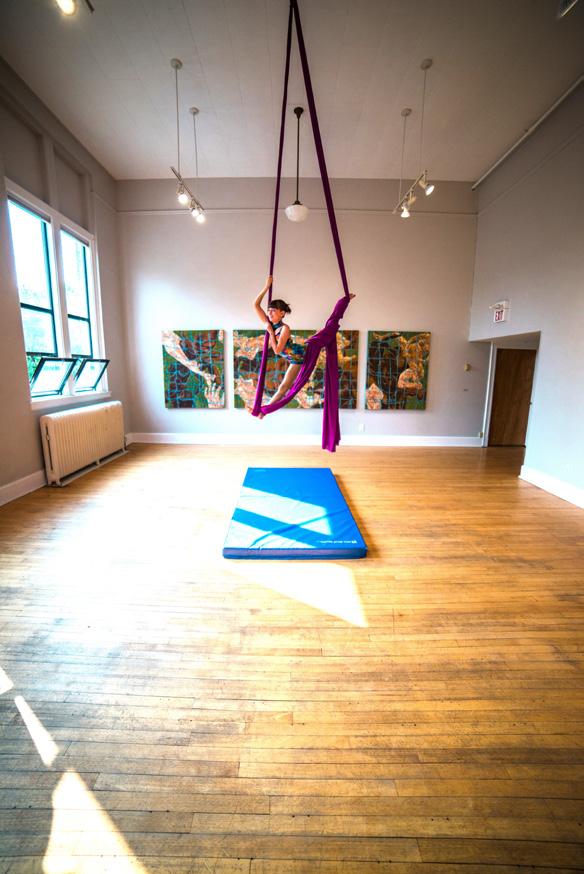

Follow-up fishing day Jan. 14, 2023
Join staff from Montana WILD to learn the basics of ice fishing including gear, safety, techniques and all the basic information to get your family out on the ice. Weather depending, you can practice your new skills on the ice January 14. This program requires registration. Call or email for more information and to register: 406-444.9941

February 7, 2023, 3:30-4:30 p.m.
Join staff from Exploration Works at the Clancy Library Community Room to make a take-home craft, learn how animals change colors with the seasons and make a bird feeder to discover what birds are in your neighborhood at this time of year. No registration is required. For more information, contact CORE at www.tinyurl.com/
like ice-skating, cross-country skiing or snowshoeing in a safe environment.



Since its inception seven years ago, the program has expanded to more than 1,000 participants spanning more than 10 states and several countries over four weekends each winter. West Yellowstone Kids ‘N’ Snow weekends will be held January 7, February 4 and March 14, 2023.




6-8 p.m. - M120s (Mini Snowmobiles) in the Park

More activities are always being added. For updates, questions on future Kids ‘N’ Snow weekends and more information, visit www.kidsnsnow.org, follow on Facebook www. facebook.com/KidsNSnow, email kidsnsnow@gmail.com or call 406-646-7701.

This year I am not aiming for a “new year, new me” mindset. I have decided to simply be more mindful of the following four things in particular (see “adjusting expectations” in point #3).
It can get tiring schlepping kids from sport to sport, activity to activity, event to event. I’ve always been a believer in my kids staying active in sports, music and friend groups. However, we recently hit “pause” on a sports season (my kids are still young enough to do so) and started saying, “not now” to various gettogethers and events; the change in our family dynamic has been incredible.
Where there was once a sense of feeling rushed constantly, there is now a calm that’s cultivated an environment of deeper connection and conversation. We’re less scattered from managing multiple kids in multiple events or places to be, and more focused inward on one another.
We’ve had more dinners at our table and fewer meals at the drive-thru. Less yelling “GET IN THE CAR! WE'RE LATE!” and more yelling “Yahtzee” as we find new ways to connect.
I’ve been a better mom, a more present mom. I’m not saying cancel everything and be hermits, but hitting “pause” for short periods throughout the year to invest in inward connections can reap benefits far more meaningful than stuffing kids in activities so that they are “busy.”
Dedicating 20 minutes to your child a day sounds so pathetic. But with three kids and two work-out-of-home-parents, plus kid activities and after-school routines, 20 minutes per kid can be hard to find.

Sure, we do other things as a family together each day, but I am referring to a dedicated, no-distractions 20 minutes with each individual child.
My rule is that I spend one-on-one time with each child in their room for 20 minutes. Interruptions from siblings are not allowed, and my phone is not present.
“New year, new me,” that’s what we all say during this time of year, right? I say it every January and for some reason, year-after-year, I forget to prioritize that elusive gym two blocks from my home, drink water, organize and reduce my coffee intake.
For those 20 minutes, they pick what we do play Pokémon cards, do a puzzle or play dolls. For the last 5 minutes, we do what I want to do, which is usually coloring or drawing while I try to subtly ask questions about school, friends and life. This connection-building has been so profound in my life, and I also know for them. Try it and see what happens after a day, week, or month... you will be surprised.



In my decade of parenting, I can go from cool mom to nuclear mom in a nanosecond. How many times can I tell you to please brush your teeth?! It’s not hard to flush the toilet! You know how it is; they push you till you break. Then the guilt sets in.


To avoid “crazy mom,” I’ve started being very clear about expectations with my kids: “I know you do not like it when I raise my voice, but I am telling you I am getting frustrated by how many times I have asked you to brush your teeth. This is the last time I am asking kindly.” Or, “Here is the list of things we need to do this morning,” and I am very clear on what is required to fulfill the requirements of our day. I’ve noticed a better response from my kids, and I hope it sticks throughout the year.

Adjusting my expectations is internal. I don’t need a perfectly cleaned house, and no one went to jail for having unfolded laundry when guests came over. I’ve tried to stop, notice and applaud myself for letting things not be perfect. Over time, I hope to allow myself more grace in parenting, working, keeping a home and being a solid partner for my spouse.
Because I am terrible at that, I need to be less of a raisin and more of an example to my children.
I’ll keep you posted on my “new mindset goals” success-to-failure ratio for 2023.

Happy New Year, Montana parents.
Blair Fjeseth is a working professional and proud Montana mom. You can reach her at blairparker.inc@gmail.com. Follow her Instagram @blair_mt for more adventures.

In this column, you can ask your questions about parenting kids from ages 2 to 10 to Flora McCormick, Licensed Counselor & Parenting Coach.

Question: I have a 4-month-old, and now my toddler won’t stay in bed. So we are getting NO sleep at all. Help!
Answer: Of course, this is the dreaded combo of a baby that isn’t sleeping through the night and a toddler now able to get out of bed. Here are a few ideas to get back on track:
1. If you have a pack n’ play or crib (and the toddler wasn’t yet crawling over the edge when you moved them to a bed), consider going back to an enclosed sleep area for as long as possible. Many families are eager to start transitioning into a “big kid bed” sooner than is really needed, and it can definitely have some drawbacks.
2. Work with a sleep coach or parenting coach who can help you to set kind and firm boundaries with your child. If they have been testing boundaries during the day, it may be feeding into the nighttime behavior of getting up when you have asked them to stay in bed.
3. Use the 12-day method in Good Night Sleep Tight, by Kim West. This woman has an incredible way of giving super tangible and specific guidance, even through the pages of a book. It’s broken into age ranges, so you can turn to the 2 ½- to 5-year-old chapters and get a very specific plan to follow. She calls it the “Sleep Lady Shuffle.” If you’re someone who doesn’t want to use “cry it out” methods, but also doesn’t want to feel like a hostage next to your child until they fall asleep, then this method is for you!
We are struggling with the transition to life with two kids. It’s overwhelming having this baby completely dependent on me for everything alongside a 3-year-old who I’m trying to potty train, keep in bed, feed, get dressed…you know how it goes. And he doesn’t understand when I say I can’t do things for him because I’m helping the baby.
Dang, mama – I can really relate to you on this. I remember those tough years. Every day was a roller coaster of overwhelm and frustration, as I tried to cope with the screaming/crying and what felt like never-ending needs coming from both kids. And, oh yeah, there was a wife, daughter, friend, and a woman also living inside me that had no clue how to keep up with life.
Here are a few sanity-saving life rafts I can extend to you: 1. Be gentle with yourself and your expectations. If you have been influenced by TikTok or Instagram to think your toddler should be eating his rainbow of colors, your body will “bounce right back” and that you’ll peacefully enjoy endless hours of snuggles… let’s do a bit of a reset.
Truly, I say this because I really needed to hear it at this stage of life: Lower your expectations.
When we lower our expectations, we can narrow what I call the expectation gap: The gap between how you THINK things should be and how they actually are. That gap has the power to influence how big your stress feels. Meaning you can decrease the overwhelm by lowering your expectations and giving yourself grace. Stop that self-judgment train and repeat, “All I can do is all I can do.”
2. Take many slow breaths, drink tea and see if you can do something silly. These three things may seem trite, but they were the only forms of self-care I could microscopically find in those early years of parenting. Instead of thinking of self-care as something as big as massages or date nights, consider much smaller gestures equally as valuable. Maybe you are someone who would find great joy in dancing to one silly song with your challenging toddler, or a person whose lungs feel refreshed with three deep, slow rejuvenating exhales. Or maybe this is a season to splurge on in-home treats like Oregon chai tea or vanilla syrup in your coffee. In this chapter, small is the new “huge” when it comes to self-care.

3. Let arms wrap around you. When friends ask if they can help, say yes. Just simply say yes. And if you haven’t found a community of support yet, there are many wonderful groups in this community. Roots Family Collaborative specifically was a place I joined in those early years with two kids. It was a place to feel seen, listened to and supported without any pressure or advice. Their resource guide is right in this month’s Montana Parent publication! Be sure to keep that on hand for help throughout the year.

To get more sanity-saving strategies for parenting young kids, join Flora’s Free Facebook Group: Sustainable Parenting. Questions for the next issue or wins/questions from this issue can be submitted to contactflora@gmail.com. A special thank you to those who submit monthly questions.

 WRITTEN BY REBECCA COLNAR PHOTOS RATZBURG FAMILY
WRITTEN BY REBECCA COLNAR PHOTOS RATZBURG FAMILY
Newborns add challenges to the hectic schedule of farming and ranching, but farm and ranch moms are up to the task. Katie Ratzburg had her first baby in mid-October 2022 and admits that having a little one so close to winter has been somewhat tricky. She lives in Sunburst, Montana, close to the Canadian border, so winters can be cold and long.
“I’m already looking forward to warmer weather when we can go for walks and ride in the Gator or the tractor,” said the first-time mom. “Trying to get out in the winter is tough. You spend so much time inside, but I feel it’s essential to get as much sunshine as possible. It’s important to keep up vitamin D levels. You don’t want winter depression to set in, especially when you’re a new parent.”
Katie grew up around Fort Collins, but her family moved to south central Montana when she was in middle school. Both sets of grandparents had farms and ranches, although her parents worked outside of agriculture. Growing up on a small acreage in the Broadview area allowed Katie to have horses, and get involved in agriculture (outside of her grandparents’ farm and ranch) through 4-H. “I wanted to go to college to be an extension agent, but after one semester I changed to crop science,” she said. She attended Northwest College in Powell, Wyoming for two years, then transferred to Montana State University where she got a bachelor’s degree in Plant Science –Crop Science Option.
“College is where I really dove into agriculture and agricultural jobs, and I started my career in agronomy sales. I did that for a local coop, then moved over to an ag science company. I now work with distributors and retailers for agricultural inputs such as herbicides and insecticides.”
Although she had met her husband, Cole, in college, the stars didn’t align until he completed his master’s at the University of Wyoming and came back home to work at the family ranch. They were married in October 2021 and Katie moved in with Cole near Sunburst where his family owns Bobcat Angus, a purebred black angus cattle ranch. The couple named their daughter Claira after Cole’s grandmother and her middle name, Sue, is Katie’s grandmother’s middle name.

“Although I don’t work on the ranch full-time because I have my job and the baby, I help Cole when he needs it. I’m the supporting role who lends a hand here and there,” Katie said. “Of course, when I was pregnant, I was very cautious working around cattle and handling vaccinations, but I could still open gates and lend a hand driving the side-by-side.”
For being so young, Claira is a well-traveled little girl on the ranch.
“If Cole is going to different pastures, we’ll ride along and watch him do things like load a trailer, or go to the barn or the feedlot. It’s been
good for her to get fresh air and good for me to get out of the house. We tag along as much as we can. She is bundled up like a marshmallow when we got out in the cold weather,” Katie said. “She sure loves her ranch puppies; those are her best buds.”
As a new mom, Katie said she’s really learned to pivot. “What worked one day is not going to work the next. You have to figure out how things will shake out, and be flexible.”

The couple feels strongly about raising their daughter in agriculture. “We want her to appreciate what it takes to produce food, fuel and fiber. We want her to have the legacy that generations before her have had.”

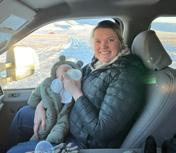
JAN 2023
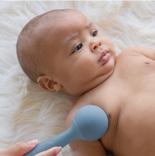
Look for this post on the Montana Parent Facebook and Instagram page starting January 1.
1. Like the post and Tag one friend
2. Follow Montana Parent magazine on Facebook and Instagram (if you don’t already!)
3. Follow @getkahlmi on Facebook and Instagram too!
Kahlmi is the world’s first baby massager that soothes infants and strengthens the baby/parent bond. It is a must-have for new parents who want to keep colic at bay, improve baby’s sleep and digestion, lessen fussiness, and strengthen immunity.

Kahlmi features three tools (Acu-Touch for gentle foot/ hand reflexology, Daily Soothe, and Bathtime Bliss) and three stage-based, low-level vibrational settings, which all provide a plethora of benefits. It is all-natural, baby-safe, toxin-free and made with soft, edible-grade silicone.

Winner will be chosen at random and announced Feb 1. Must be 18 years of age to enter.
For more information about Kahlmi, visit: www.kahlmi.com

Look for this post on the Montana Parent Facebook and Instagram page starting January 1.
1. Like the post and Tag one friend 2. Follow Montana Parent magazine on Facebook and Instagram (if you don’t already!)
3. Follow Montana Ballet Company on Facebook and Instagram too! Other info: Winner will be chosen at random and announced Feb 1. Must be 18 years of age to enter.

JAN 2023 For more information about Montana Ballet Company, visit: montanaballet.org
Win four tickets to MBC’s The Little Mermaid at the Willson Auditorium on Saturday, February 18th at 7pm. The Little Mermaid will feature a live orchestra and vocalists, stunning costumes and set design, as well as special guest artists, Malena Ani and Kuu Sakuragi, from Pacific Northwest Ballet.




